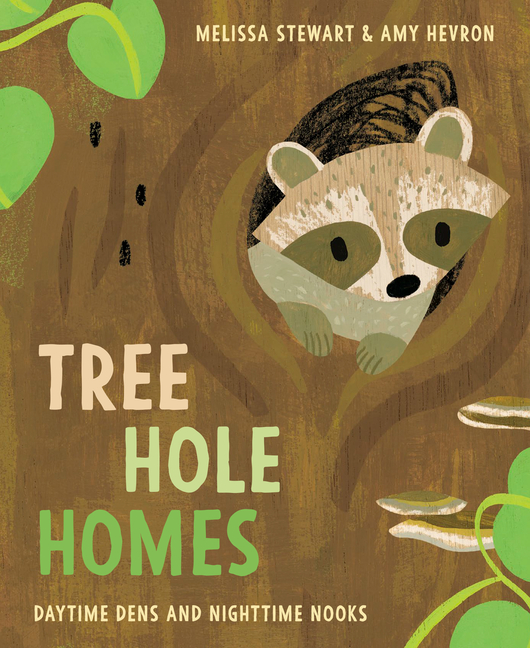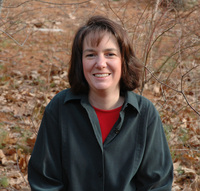Meet-the-Author Recording with Melissa Stewart
Tree Hole Homes: Daytime Dens and Nighttime Nooks |
Melissa Stewart introduces and shares some of the backstory for creating Tree Hole Homes: Daytime Dens and Nighttime Nooks.
Translate this transcript in the header View this transcript Dark mode on/off
Melissa Stewart: Hi, my name is Melissa Stewart, and I am the author of Tree Hole Homes: Daytime Dens and Nighttime Nooks, illustrated by Amy Hevron and published by Penguin Random House. The story behind Tree Hole Homes actually traces all the way back to when I was in fourth grade, but then there is a 10-year-old story that sort of got me jump-started on actually starting to write the book. So about 10 years ago, I went on vacation to visit my brother-in-law in British Columbia, and we did some hiking, and there was actually a tree that we came across large enough, I would fit inside, and so as I was inside the tree and I looked around it immediately took me back to reading My Side of the Mountain, when I was in fourth grade. When I read that book, I longed to live in a tree and to have the kinds of adventures that the main character, Sam, had, and so that's really what inspired me to write this book as a non-fiction book.
When I got home, I started doing research and creating a paper file, but also an electronic file. Whenever I came across research ideas that I thought would be good for the book, I would stick them into either the physical file or the electronic file, and over time the animals built up, and I knew I had enough information for a book. So then it was just a matter of writing it, of finding just the right structure for the book and just the right way to present the details to readers. That is the hardest part of writing nonfiction is figuring out what that structure is going to be.
In school, most kids learn five main tech structures for non-fiction, and so I will start there, but then often I will kind of make up the structure. I'll go beyond those five main structures to choose just the right one for the information in this book. But most of this book is, actually has a compare and contrast text structure, which is one of the five that kids learn. So what I'm doing is I'm comparing animals that live in big holes, small holes, holes that are created by nature, holes that are created by other animals, holes where animals are living in a calm and quiet environment versus some that are full of babies and raucous and exciting.
So I'm just showing the contrast in the wide variety of tree holes and the animals that live within them from all over the world. So it includes things that we might expect like birds or raccoons, but also some unexpected creatures like lizards and crabs. I think I had really two favorites. So one favorite. They're just sort of the animals that you wouldn't believe live in tree holes, and so one of them is the Liberian tree crab that lives in marshy areas, and it spends most of its time inside a tree hole. Then the other one that I thought was very interesting is this rainforest frog that lives high in the treetops, way up in the canopy, and it lays its eggs in little hollows inside the tree that fill with water. It lives almost its entire life way, way high off the ground.
So one really exciting thing about this book that I hope they will notice is the way that illustrator Amy Hevron created the art, that she actually painted on pieces of wood, and so sometimes she used just oak plywood. But she also used other kinds of interesting wood from all over the world. If you look at the book, you can see that the backgrounds are painted, but the trees are actually plain. They're unpainted, and so you can really see the grain of the wood in each of the trees. That's one really cool aspect of this book that I don't think I've seen in any other book ever before.
I'll just read a little bit of the beginning:
Imagine this one day, while walking in the woods, you spot a towering tree with a hole, big enough to slip inside, so you do. As you crouch down, and close your eyes, the sound of the outside world, fade away and you wonder, What would it be like to live inside a tree?
This Meet-the-Author Recording with Melissa Stewart was exclusively created in August 2022 by TeachingBooks with thanks to Random House.




